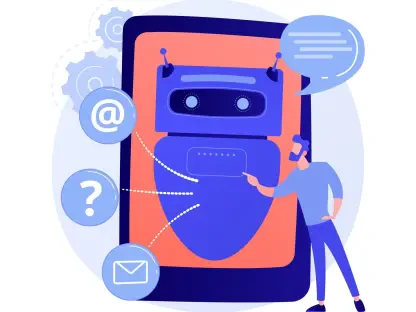In the ever-evolving landscape of telecommunications, the integration of artificial intelligence (AI) presents both challenges and opportunities. Rupert Marais, an in-house security specialist with expertise in endpoint and device security, cybersecurity strategies, and network management, offers his perspective on how BT is navigating these waters. With AI potentially reshaping the workforce and organizational structure, Marais provides insights into BT’s strategic approach, future planning, and the anticipated impact on both employees and operations.
Can you explain the reasoning behind the decision to potentially replace more BT staff with AI?
The drive behind this decision ties back to the efficiencies AI can introduce. By automating repetitive tasks and leveraging data-driven insights, BT aims to streamline operations, reduce costs, and reinforce its competitive edge. The evolving nature of telecommunications necessitates that we adapt and leverage technological advancements to enhance service delivery and optimize our workforce. However, this is not purely about cost-cutting; it’s about positioning BT as a leader in innovation and efficiency.
How does BT plan to ensure AI integration does not lead to decreased customer satisfaction like some other companies have experienced?
BT is very much aware of the pitfalls others have faced when over-relying on AI. To mitigate this risk, we are committed to a balanced approach where AI supports, rather than supplants, human capabilities. There’s a significant emphasis on ensuring AI systems are robustly tested and capable of delivering consistent, high-quality support. Customer feedback will be pivotal, guiding the refinement of these systems to achieve a seamless blend of human and technological interaction.
What steps is BT taking to maintain service quality while reducing the workforce through AI?
The key lies in gradual implementation and rigorous oversight. We are investing in training programs to upskill our workforce, ensuring that any reduction in headcount does not come at the expense of service quality. AI will assume roles better suited to automation, freeing up our human talent to tackle more complex issues and improve customer interactions. Our strategy includes ongoing monitoring and adjustment to maintain exemplary service levels.
How do you see the role of generative AI evolving within BT’s customer service operations?
Generative AI holds tremendous promise for transforming customer service. By personalizing interactions and accelerating issue resolution, it can vastly enhance the customer experience. We anticipate it playing a significant role in predictive analytics, helping us anticipate customer needs and resolve issues proactively. The goal is for generative AI to augment our capabilities, providing insights and solutions that elevate our service standards.
Could you elaborate on the plans to cut 10,000 customer service roles? How will AI play a role in this process?
This reduction aligns with our vision of automating processes where appropriate, allowing generative AI to handle queries that don’t require human intervention. By automating routine inquiries, we free up our skilled staff to focus on more intricate and sensitive issues, thus improving efficiency and job satisfaction. While this transition might be challenging, maintaining a people-first approach will be crucial as we navigate these changes.
What are the potential challenges BT might face in further reducing its workforce with AI?
A primary challenge is maintaining a balance between technological and human elements within our customer service framework. There’s always a risk of over-relying on technology, leading to potential service quality dips or customer dissatisfaction. Furthermore, it’s essential to navigate the cultural shift within our organization, fostering an environment where staff feel valued and secure in their roles despite the evolving landscape.
Can you discuss BT’s strategy for using AI as a tool rather than a complete replacement, in line with certain industry trends?
Our philosophy embraces AI as an enabler rather than a replacement. By integrating AI into our workflows, we aim to enhance and expedite processes that improve our operational efficiency without diminishing the human element that defines our brand. We look to AI for augmentation, leveraging its capabilities to provide deeper insights and faster solutions that empower our employees to deliver outstanding service.
How does BT’s financial outlook influence its decision to potentially reduce more jobs beyond the announced 55,000 by 2030?
While financial prudence is always at play, any further reductions stem less from immediate financial pressures and more from strategic foresight. By harnessing AI, we aim to build a more agile and resilient BT ready to tackle future market shifts. The cost savings are crucial, but reinvesting those into technology and training programs ensures we continue to provide value and innovation.
What criteria would lead BT to reconsider or reverse its reliance on AI, similar to what we’ve seen with other companies like Klarna and Duolingo?
Customer satisfaction stands as our primary criterion. Should we observe a consistent decline in service quality or customer feedback highlighting dissatisfaction, we would need to reassess AI’s role within our service strategies. We’re continuously reviewing AI performance, ensuring it meets our stringent standards and aligns with our long-term vision, and are prepared to pivot if necessary.
Regarding Openreach, what factors are influencing the decision to potentially sell off this part of BT?
The potential sale of Openreach is a strategic consideration influenced by various factors, including market valuation and strategic alignment with BT’s core objectives. If Openreach’s value isn’t reflected in our share price, or its objectives diverge from BT’s long-term strategy, spinning it off might be revisited. However, it’s essential to emphasize that any decision would be driven by what’s best for BT’s future growth and stability.
How is BT ensuring that the value of Openreach is accurately reflected in the company’s share price?
This involves ongoing communication with analysts, investors, and stakeholders. Ensuring Openreach’s potential and achievements are clearly recognized in our financial reports is essential. Additionally, strategic initiatives aimed at enhancing its performance and showcasing its standalone value aid in ensuring its contribution to BT’s overall valuation is fully appreciated.
What are the potential benefits and drawbacks of spinning off Openreach for BT?
Spin-offs can unlock shareholder value by allowing the segment to operate with greater focus and independence, potentially attracting specific investors. On the downside, BT would miss out on integrating infrastructure advantages and might need to establish new operational protocols post-spin-off. The decision would hinge on whether the benefits of autonomy and potential capital gain outweigh these operational integrations.
Could you clarify the current stance on potentially spinning off Openreach and the timeline for such a decision?
Currently, a spin-off remains speculative. The contemplation of such a move is contingent on market conditions and the completion of network upgrades. We continue to assess the landscape but are focused on our core priorities and operational excellence. Any decision made will be timely and strategically sound, ensuring it aligns with our overarching growth ambitions.
How is BT addressing the concerns of manager-grade employees regarding the recent pay rise situation?
We’re committed to maintaining open lines of communication with affected employees, understanding their concerns, and working with unions to explore feasible solutions. We acknowledge the feedback received, which has been invaluable in shaping potential resolutions. Management recognizes the contributions of these employees and aims to address their grievances within the scope of current financial constraints.
What impact might the unrest among manager-grade employees have on BT’s operations and overall morale?
Employee morale is integral to operational success, and any unrest has the potential to impact productivity and service delivery. We’re closely monitoring this and are focused on resolving issues swiftly to minimize disruption. Our aim is to foster a collaborative environment where employees feel heard and valued, maintaining trust and ensuring continued motivation across the board.
How is BT planning to resolve the dissatisfaction among second-line support staff and upwards over pay issues?
Resolution efforts are centered around constructive dialogue and transparency. BT is actively engaging with representatives and staff to find a mutually beneficial path forward. While financial challenges may constrain immediate actions, we’re exploring alternative avenues, including enhanced benefits or training opportunities, to address dissatisfaction and bolster employee engagement.
What is your forecast for how AI will impact the telecommunications industry in the coming years?
AI is poised to revolutionize the industry by further automating processes, enhancing customer insights, and enabling personalized service delivery. I foresee a shift towards more proactive service models, where data-driven decisions drive significant improvements in efficiency and customer satisfaction. However, maintaining a delicate balance between human and AI interaction will be crucial in leveraging these advancements responsibly and sustainably.









